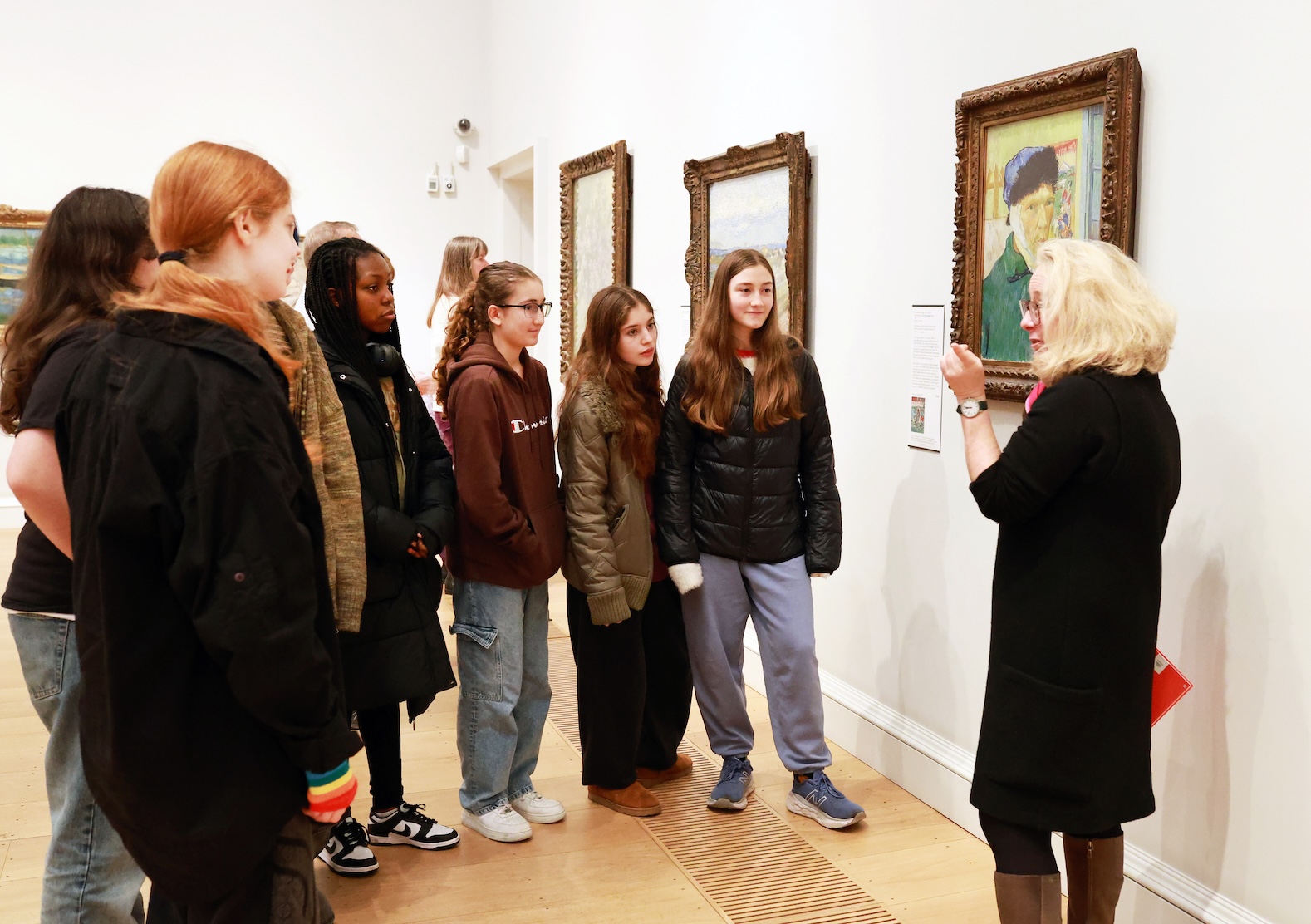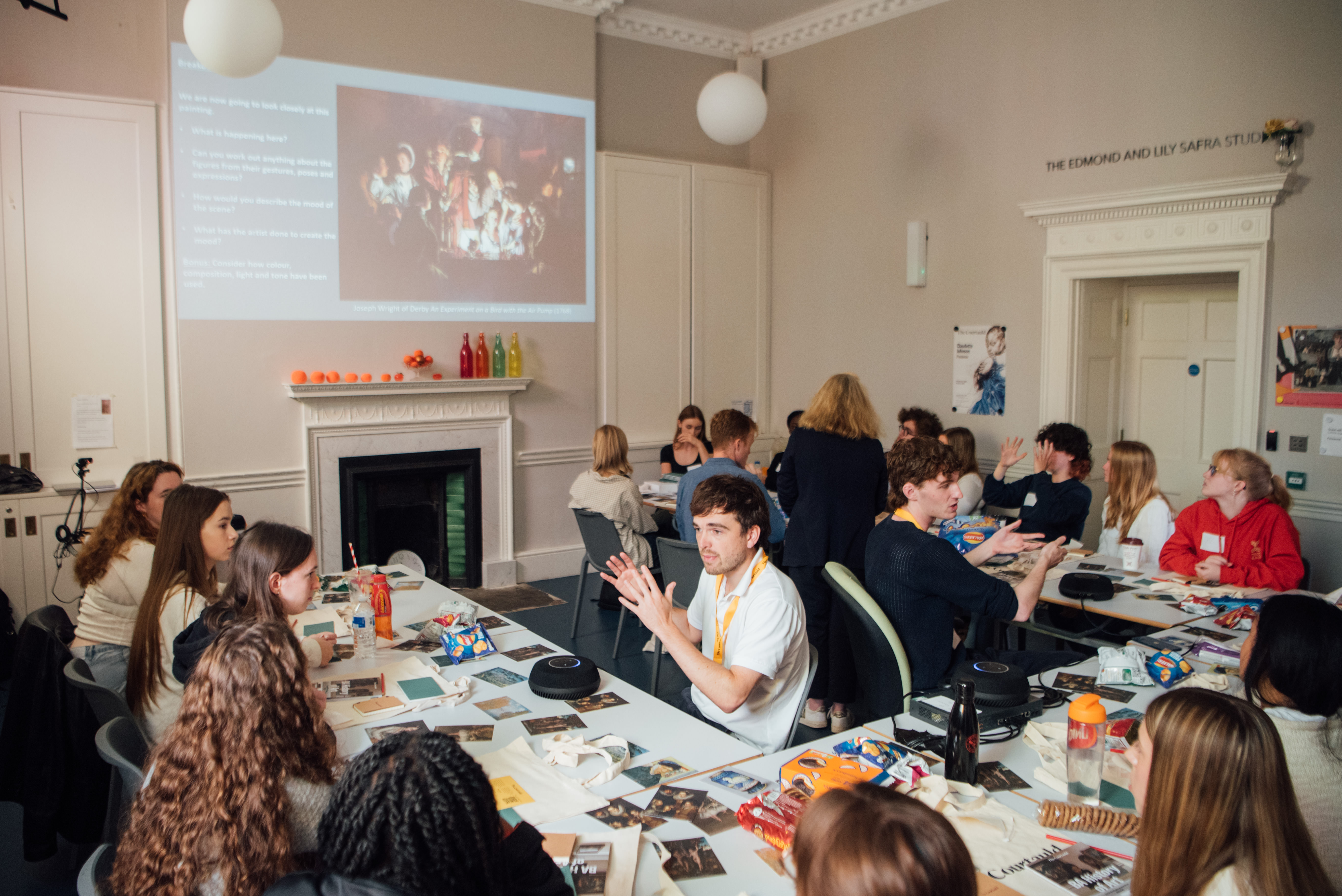
Christie's Education Scholarship winner feels studying with Art History Link-Up is shaping her life
By Beatrice Michalickova, AHLU student
Hello, my name is Beatrice and for the past two years I’ve studied Art History A level and completed an EPQ through Art History Link-Up. It has been an incredibly enriching and invaluable experience. As my school didn’t offer Art History, AHLU gave me the opportunity to study a subject I’ve always been passionate about, in a way that felt accessible and deeply engaging.
Studying Art History alongside my Fine Art A level has really shaped the way I think and create. Learning about different artists, periods, and ideas has given me so much context and inspiration for my own practice, and helped me understand the wider cultural and historical conversations that art is part of.
The Saturday classes, held in the Courtauld, have been a highlight, not just because of the unique setting, but because of the supportive community and teaching. After not winning the Christie’s Education Scholarship last year, I almost didn’t enter the competition again, but after some encouragement from the tutors, I’m so glad I did.
My essay was entitled, ‘Between Promise and Turmoil: Michael Armitage’s The Promised Land’ (and I'm pleased to say I was one of five top placed students who won a laptop each and access to Christie’s Education online courses). I hope my experience encourages others to keep trying and believe in themselves. I’m now planning to pursue art and art history further at university, and I’m very grateful to AHLU for their support, and to Christie’s Education for such amazing prizes!
Read the first few paragraphs of Beatrice's essay below and click HERE to read the full article.
Figures. Bodies. Movement. A frenetic tableau, split into two dynamic segments. People crowd the space, some grasping trumpets, others mid-stride, scattering in the wake of a tear-gas explosion. A baboon, cross-legged, sits tauntingly at the centre. A fabric, caught by the wind, flutters, revealing a reclining woman beneath its folds. Tension crackles in the air as the figures blur in frantic motion, a violent push against a larger, unseen force. At the edges, fragments of the scene float in chaos, trapped in a moment of suspended time.
Vivid, visceral, and profoundly political, Michael Armitage’s oil painting The Promised Land (2019) immerses the viewer into the heart of Kenya’s tense political unrest during the aftermath of the 2017 general elections. Measuring 220 × 420 cm, this monumental work reflects the explosive energy of protests, violent confrontations, and the haunting disillusionment of a nation torn by conflict; his depiction captures both the dramatic and surreal elements of a society grappling with its fractured political landscape. Central to the painting is the representation of a march—a symbolic cry for a better future, yet one that is fraught with confusion, pain, and hope.
The figures in the painting are caught between the celebrations and the violence, pulled between a utopian vision of 'The Promised Land' and the stark reality of dissidence. “Painting is a way of thinking through something, trying to understand an experience or an event a little better, and trying to communicate something of the problem to others.”, Armitage reflects. Through his meticulous blend of personal memory, political imagery, and symbolism, he offers a narrative that speaks not only to Kenya’s immediate political crisis, but also to the broader, universal struggles over power, identity, and collective hopes.
Art History is under threat
We believe art history should be for everyone, however fewer than 1% of state supported secondary schools offer Art History A Level. As a result, there is a lack of diversity in the arts sector and an increasing skills shortage. We are the only charity offering formal Art History teaching to school-aged students from all backgrounds. Your financial support will ensure that everyone has an opportunity to study art history: together we can transform the future of the arts.






